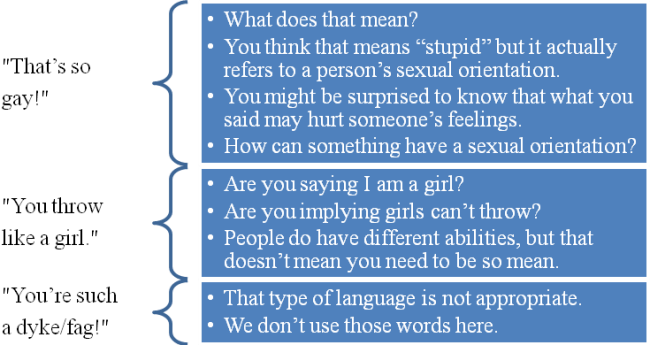Most experts acknowledge that bullying is a serious problem that has negative consequences for both perpetrators and victims. However, we know very little about how bullying early in life affects future behaviors.
Several years ago, the Centers for Disease Control and Prevention began a partnership with researchers at the University of Illinois, Urbana-Champaign to better understand how bullying may lead to sexual violence. When we say “sexual violence,” we are talking about one specific type, sexual harassment, which does not include forcible acts like rape. It’s important to know whether youth who engage in bullying behavior are also at risk for sexually harassing their peers. This information can help us prevent sexual harassment from occurring in the first place.
Key Terms
- Bullying: Bullying is unwanted, aggressive behavior among school aged children that involves a real or perceived power imbalance.
- Homophobic Teasing: Negative attitudes and behaviors directed toward individuals who identify as or are perceived to be lesbian, gay, bisexual, or transgendered.
- Sexual Harassment: Includes comments, sexual rumor spreading, or groping.
For three years, we surveyed over 1,300 middle school youth yearly. The youth told us about their experiences with sexual harassment and bullying others as well as if they used phrases like “homo, gay, lesbo, fag or dyke” to tease other students.
This is what we found…
- 12% of females and 12% of males bullied others
- 34% of males and 20% of females teased a friend by calling him/her names like homo, gay, lesbo, fag or dyke (i.e., homophobic teasing)
- 34% of males and 28% of females made sexual comments to other students
- 5% of males and 7% of females spread a sexual rumor about another student
When we examined how these behaviors changed over the three years, we found that students who bullied others and teased others using homophobic slurs in 6th grade were more likely to tell us that they sexually harassed other students in 7th grade. This suggests that both bullying behaviors and homophobic teasing behaviors may be precursors to later sexual harassment behaviors, as the youth get older.
So, how do we build roadblocks to prevent our students from bullying, homophobic teasing, and sexually harassing others? We must change the dialogue! Here are some suggestions to consider when working directly with youth:
If you hear this... You can say this...

Learn more about bullying and specific groups.

